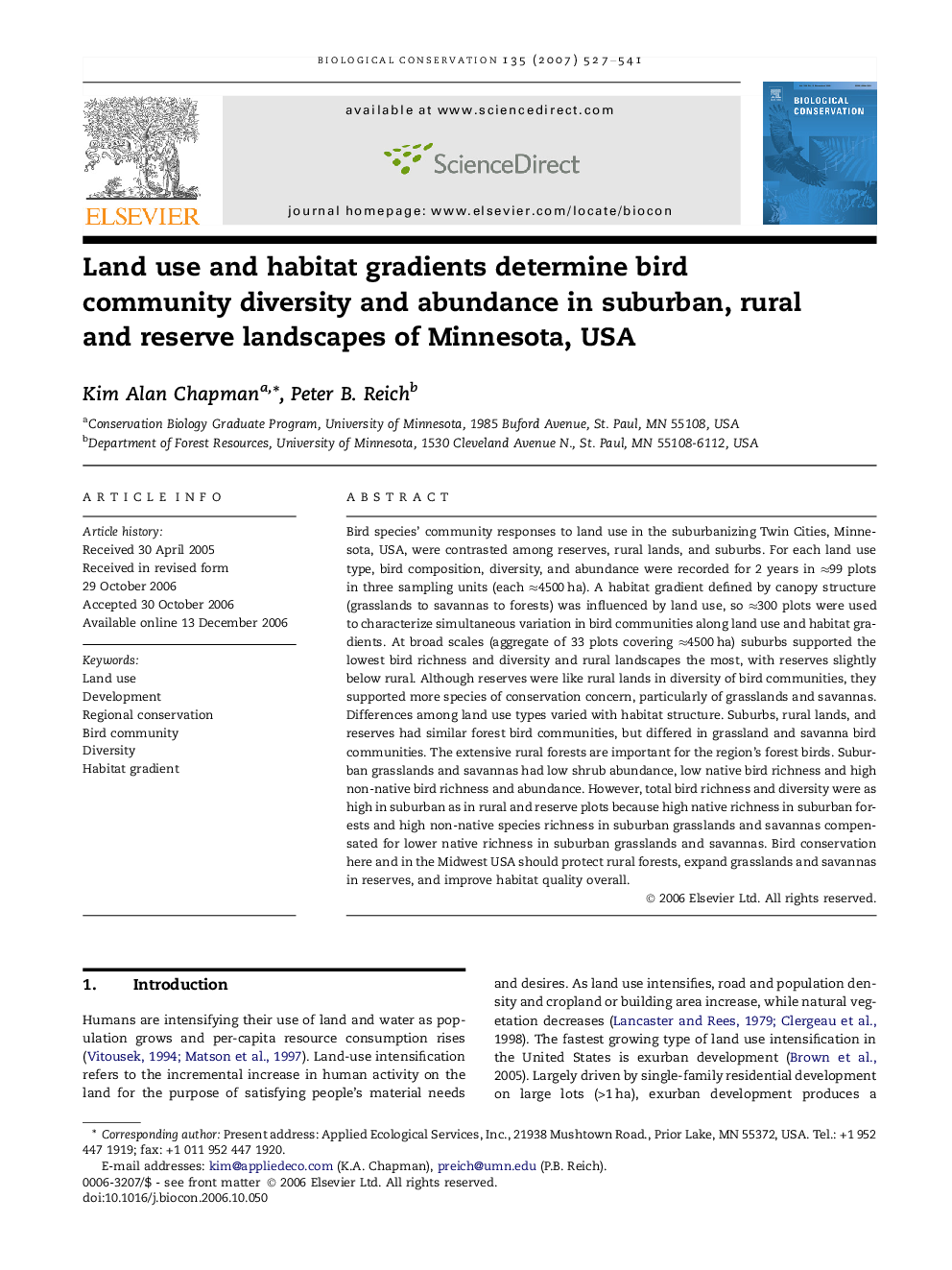| Article ID | Journal | Published Year | Pages | File Type |
|---|---|---|---|---|
| 4387280 | Biological Conservation | 2007 | 15 Pages |
Bird species’ community responses to land use in the suburbanizing Twin Cities, Minnesota, USA, were contrasted among reserves, rural lands, and suburbs. For each land use type, bird composition, diversity, and abundance were recorded for 2 years in ≈99 plots in three sampling units (each ≈4500 ha). A habitat gradient defined by canopy structure (grasslands to savannas to forests) was influenced by land use, so ≈300 plots were used to characterize simultaneous variation in bird communities along land use and habitat gradients. At broad scales (aggregate of 33 plots covering ≈4500 ha) suburbs supported the lowest bird richness and diversity and rural landscapes the most, with reserves slightly below rural. Although reserves were like rural lands in diversity of bird communities, they supported more species of conservation concern, particularly of grasslands and savannas. Differences among land use types varied with habitat structure. Suburbs, rural lands, and reserves had similar forest bird communities, but differed in grassland and savanna bird communities. The extensive rural forests are important for the region’s forest birds. Suburban grasslands and savannas had low shrub abundance, low native bird richness and high non-native bird richness and abundance. However, total bird richness and diversity were as high in suburban as in rural and reserve plots because high native richness in suburban forests and high non-native species richness in suburban grasslands and savannas compensated for lower native richness in suburban grasslands and savannas. Bird conservation here and in the Midwest USA should protect rural forests, expand grasslands and savannas in reserves, and improve habitat quality overall.
